StemUp: OCR A A level Physics 3.4: Materials
1/39
There's no tags or description
Looks like no tags are added yet.
Name | Mastery | Learn | Test | Matching | Spaced |
|---|
No study sessions yet.
40 Terms
What is meant by a tensile deformation force? (1)
This is a force that acts away from a spring and will stretch it out causing an extension in the spring.
What is meant by an extension of a spring? (1)
This is where the spring is stretched from its equilibrium position by a tensile force.
What is meant by a compressive deformation force? (1)
These are forces that acts toward the centre of the spring. They will cause compression of the spring.
What is meant by the compression of a spring? (1)
This is where the spring is compressed from its equilibrium position (and made smaller) by a compressive force.
What is Hooke's law? (1)
Hooke's law states that for a material within its elastic limit, the force applied is directly proportional to the extension of the material.
What is Hooke's law used for? (1)
It is used to model the behaviour of springs when compressive or tensile forces are applied to them.
What is the elastic limit? (1)
This is the limit of extension for a spring after which it will be permanently deformed and will not obey Hooke's law.
What is the equation of Hooke's law? (1)
For a spring with spring constant (k) and undergoing an extension (x) the force on the spring is given by: F = k x
When is Hooke's law valid? (1)
Hooke's law is only valid if the spring is within its elastic limit.
What is the spring constant (k)? (1)
This is a measure of stiffness for the spring, the larger k is the stiffer the spring is. It is measured in Nm-1
What is a force-extension graph? (2)
- This is a graph with force on the y-axis and extension on the x-axis.
- It shows how the shape of the material will change when extending (or compressing) due to a tensile force.
What does a force-extension graph for a spring look like? (1)
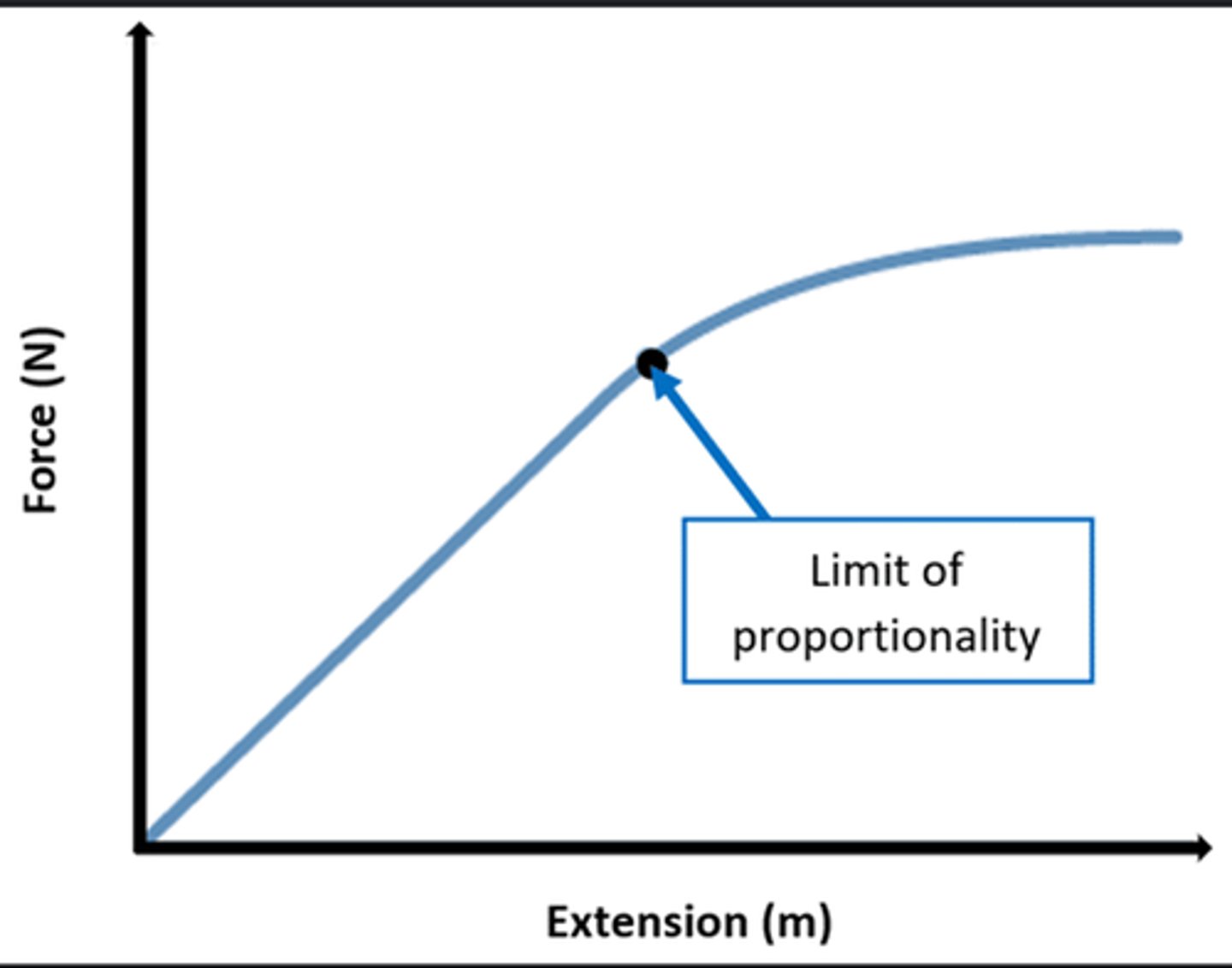
What does a force-extension graph for a spring show us? (4)
- Initially for small forces and extensions, the relation is linear as the spring follows Hooke's law with a gradient equal to the spring constant (k) it shows elastic deformation.
- At a certain point (limit of proportionality) the spring will start to plastically deform and will not return to its original shape, the relationship is not linear anymore.
What is meant by elastic deformation? (1)
This means the object will return to its original shape when a tensile or compressive force is removed.
What is meant by plastic deformation? (1)
This means the object will not return to its original shape when a tensile or compressive force is removed.
What does a force-extension graph for a wire being loaded and unloaded look like? (1)
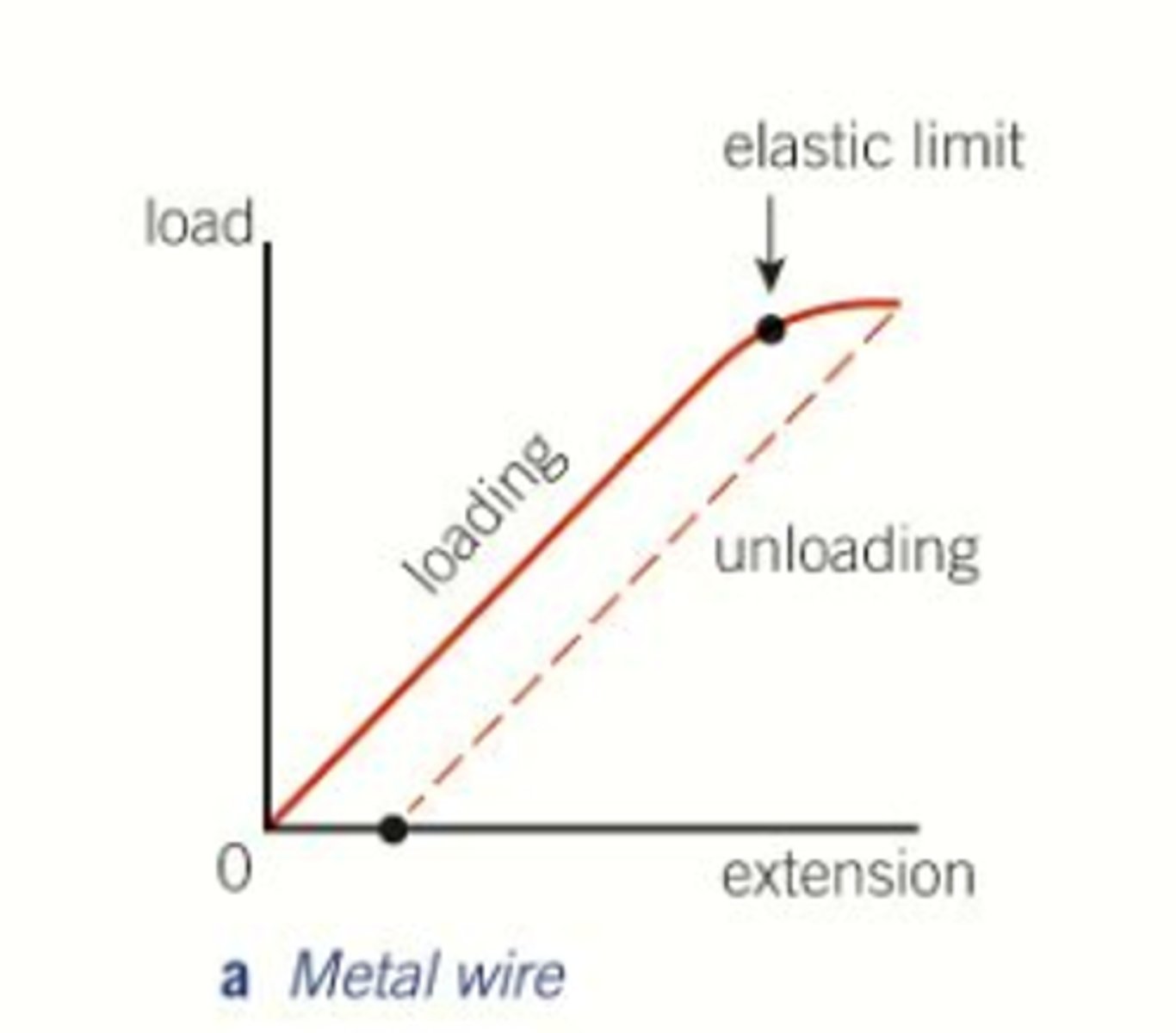
What does a force-extension graph for a wire being loaded and unloaded show us? (3)
- The wire will obey Hooke's law and the relation will be linear until the elastic limit where it starts to plastically deform.
- Once it unloads it will be left with a permanent extension which is shown by the unloading curve.
What does a force-extension graph for rubber look like? (1)
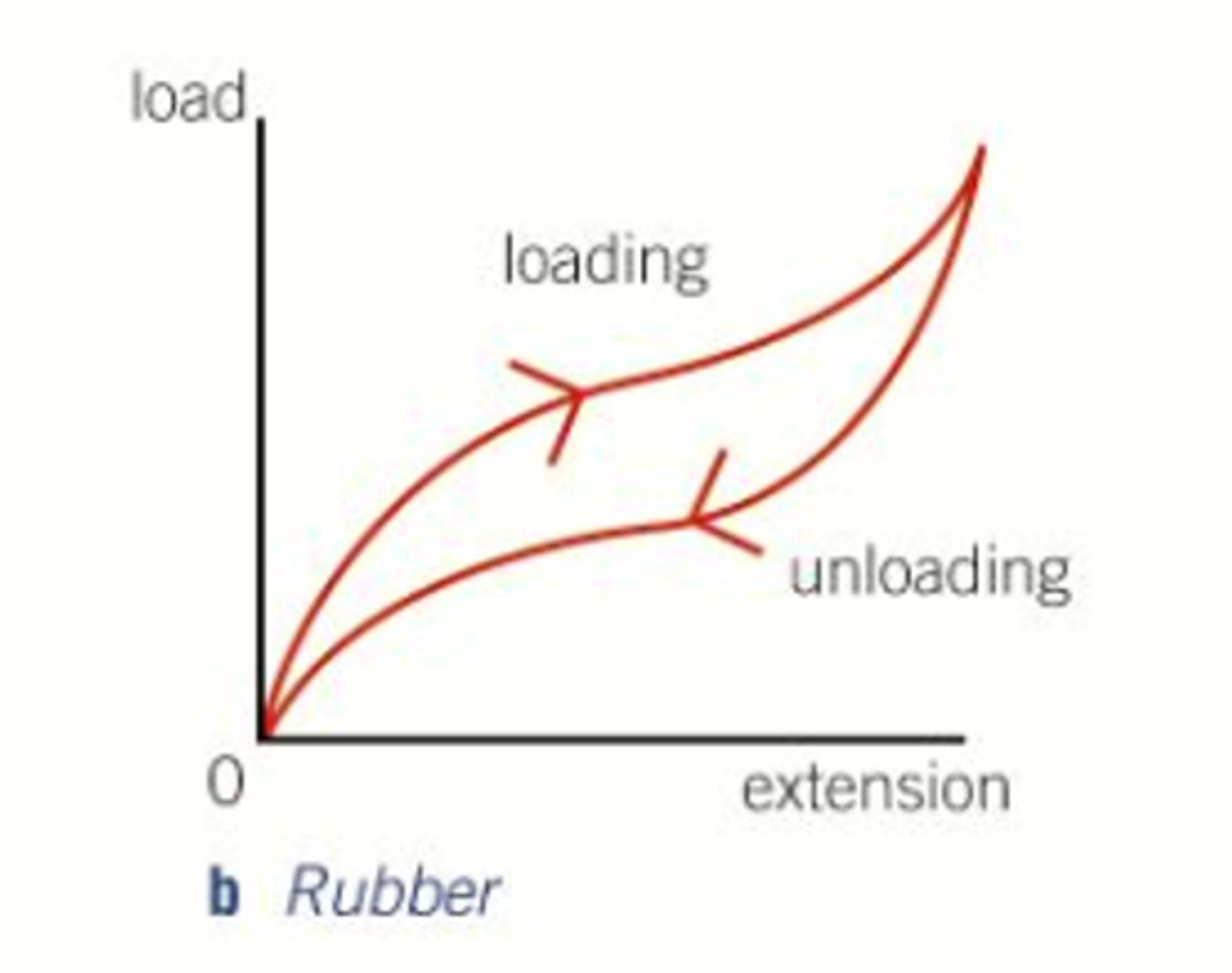
What does a force-extension graph for rubber show us? (2)
- Rubber does not experience deformation as the unloading curve ends at the same place the curve starts at.
- The area between the curves shows the energy required to stretch the rubber out which was then transferred to thermal energy when the force was removed.
What does a force-extension graph for polythene look like? (1)
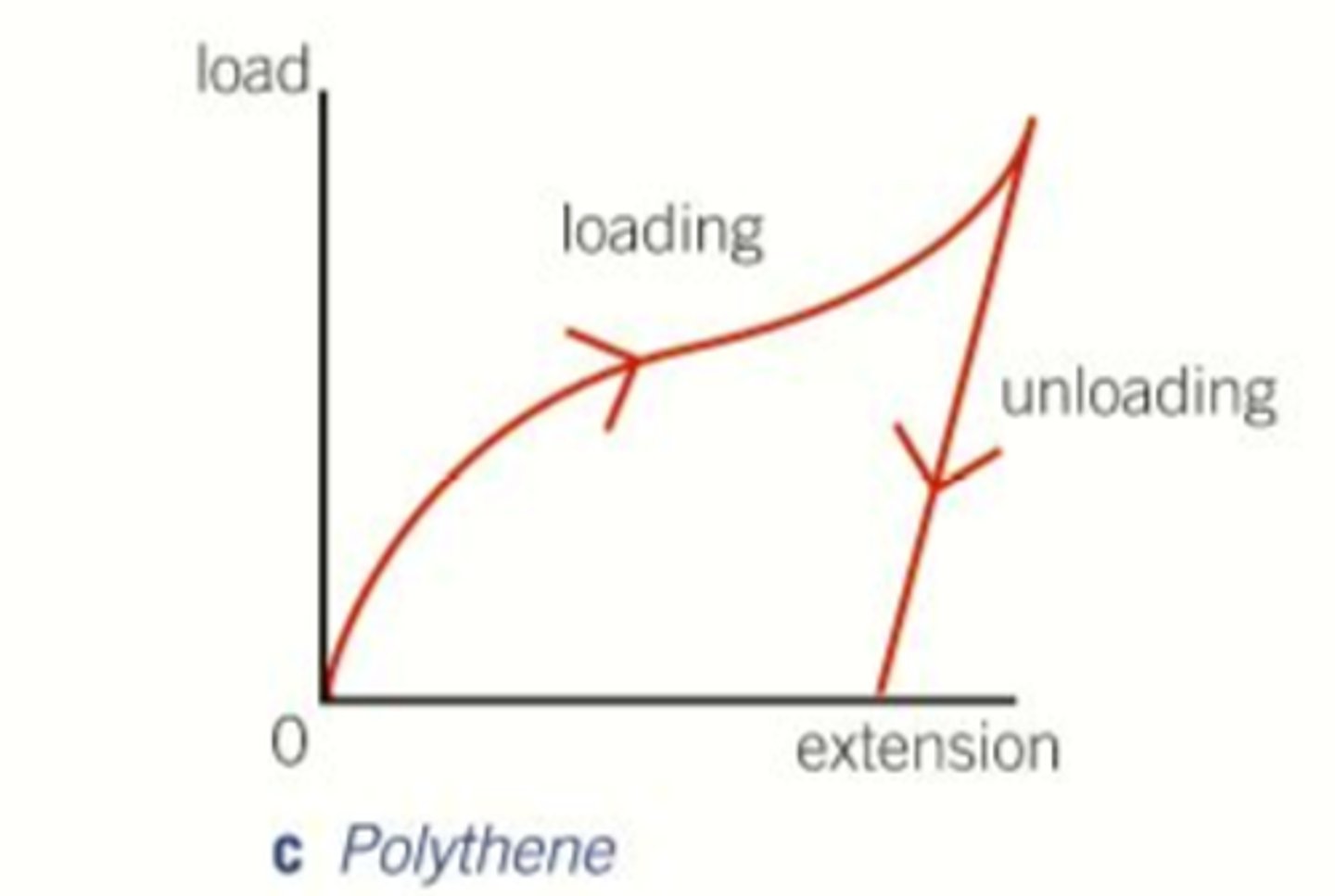
What does a force-extension graph for polythene show us? (2)
- Polythene does not obey Hooke's law as there are no linear sections of the graph.
- Plastic deformation occurs very quickly and it is easy to deform it into new shapes.
How is the work done found from a force-extension graph? (1)
The work done is the area underneath the force-extension graph. (Usually a triangle)
What are the equations for elastic potential energy (EPE)? (2)
From the area under a force-extension graph, the energy is given by: E = 1 / 2 Fx
As F = kx in Hooke's law we can rewrite the energy as: E = 1 / 2 k𝑥2
What is the definition of stress? (1)
This is the force applied to a material per unit cross sectional area.
What is the equation for stress? (1)
This is given by σ = F / A
Where σ is the stress, F is the force applied to the material (N) and A is the cross sectional area of the material m2.
What is the unit and S.I. unit for stress? (1)
Stress is measured in Pascals (Pa) and the S.I. unit is Nm⁻²
What is the definition of strain? (1)
The strain is the ratio between an objects extension (or compression) to its original length. It has no units and can be written as a percentage.
What is the equation for strain? (1)
The equation is ϵ = x / L
Where ϵ is the strain, x is the extension (or compression) (m) and L is the original length (m).
What is the definition of Young's modulus? (1)
This is defined as the ratio of stress to strain and is the gradient of the stress-strain graph.
What is the equation for Young's modulus? (1)
This is E = σ \ ϵ
Where E is Youngs modulus (Pa), σ is stress (pa) and ϵ is strain.
What does a stress-strain look like for a wire? (1)
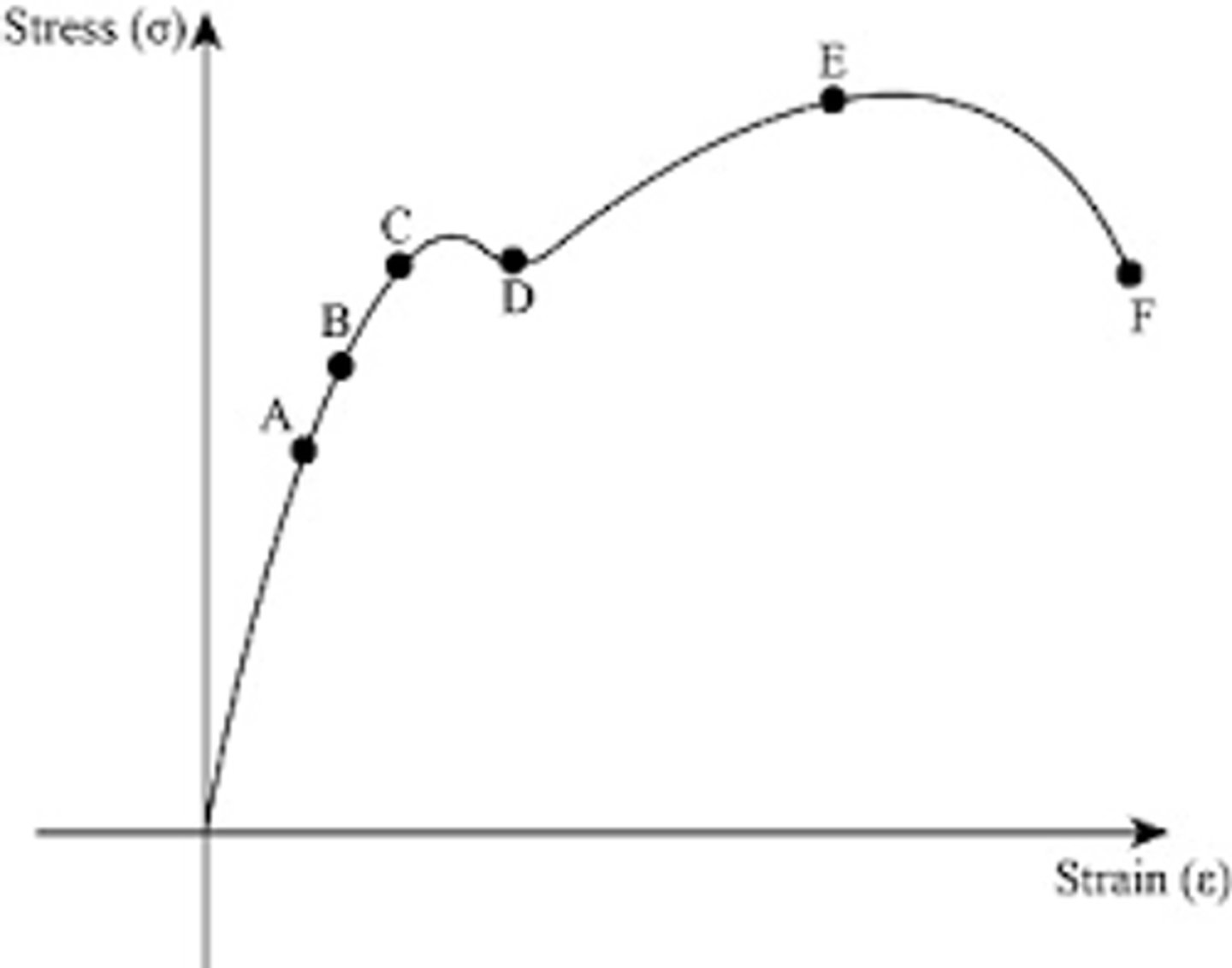
What does a stress-strain graph for a wire show us? (6)
- At point A the relation is linear and the gradient is equal to the Youngs modulus.
- B is the limit of proportionality and Hooke's law is no longer obeyed.
- C is the elastic limit and the wire will start to become plastically deformed.
- D is the yield point where there will be rapid extension.
- E is the ultimate tensile strength which is the maximum stress that can be applied.
- F is the breaking point where the wire will break.
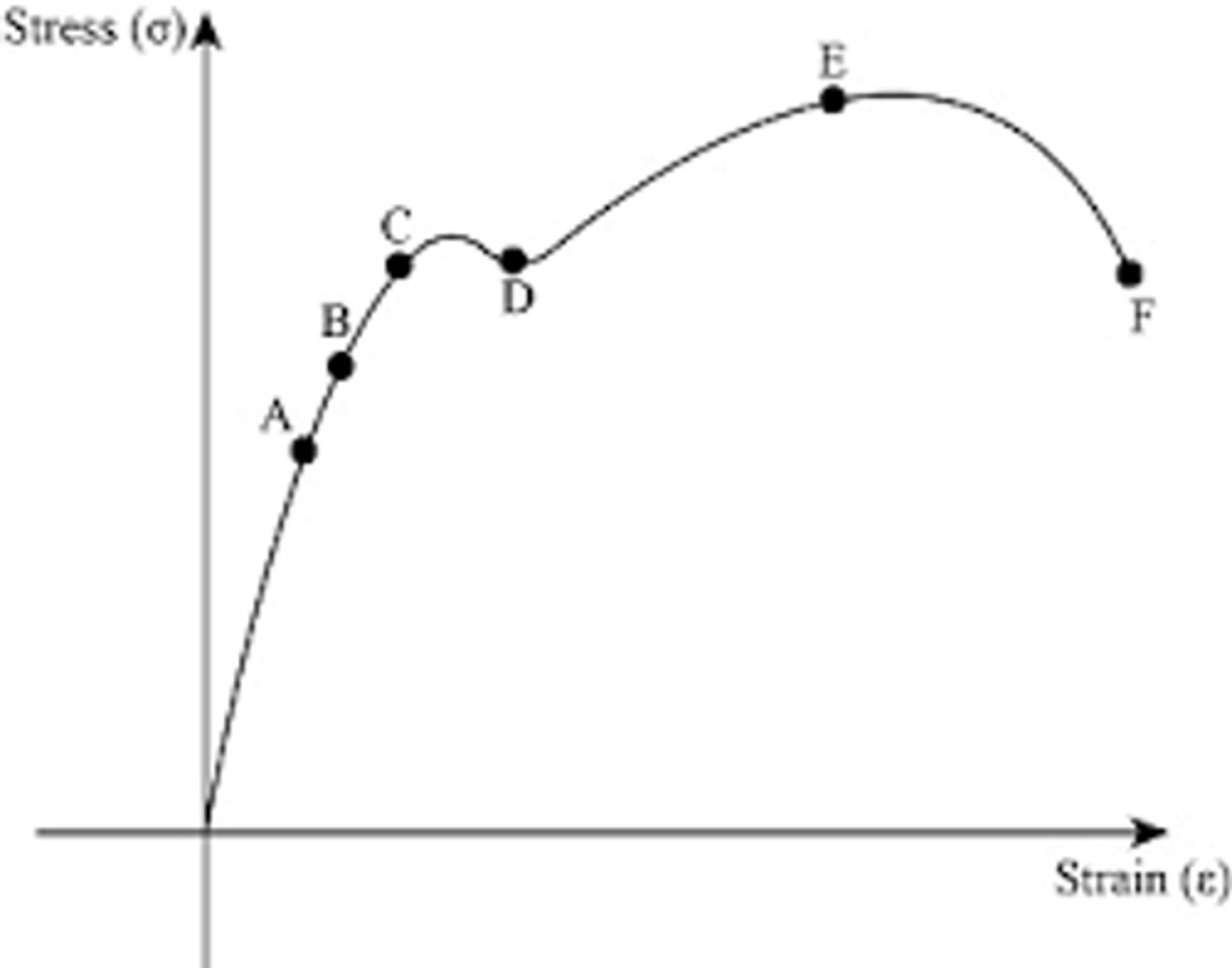
What is meant by the yield point? (1)
This is the point on a stress-strain graph where elastic bonds break and the material will undergo a large extension under little stress.
What is meant by the ultimate tensile strength (UTS)? (1)
This is the maximum stress that can be applied to a material. Stronger materials will have a higher value of UTS.
What does a stress-strain look like for a brittle material? (1)
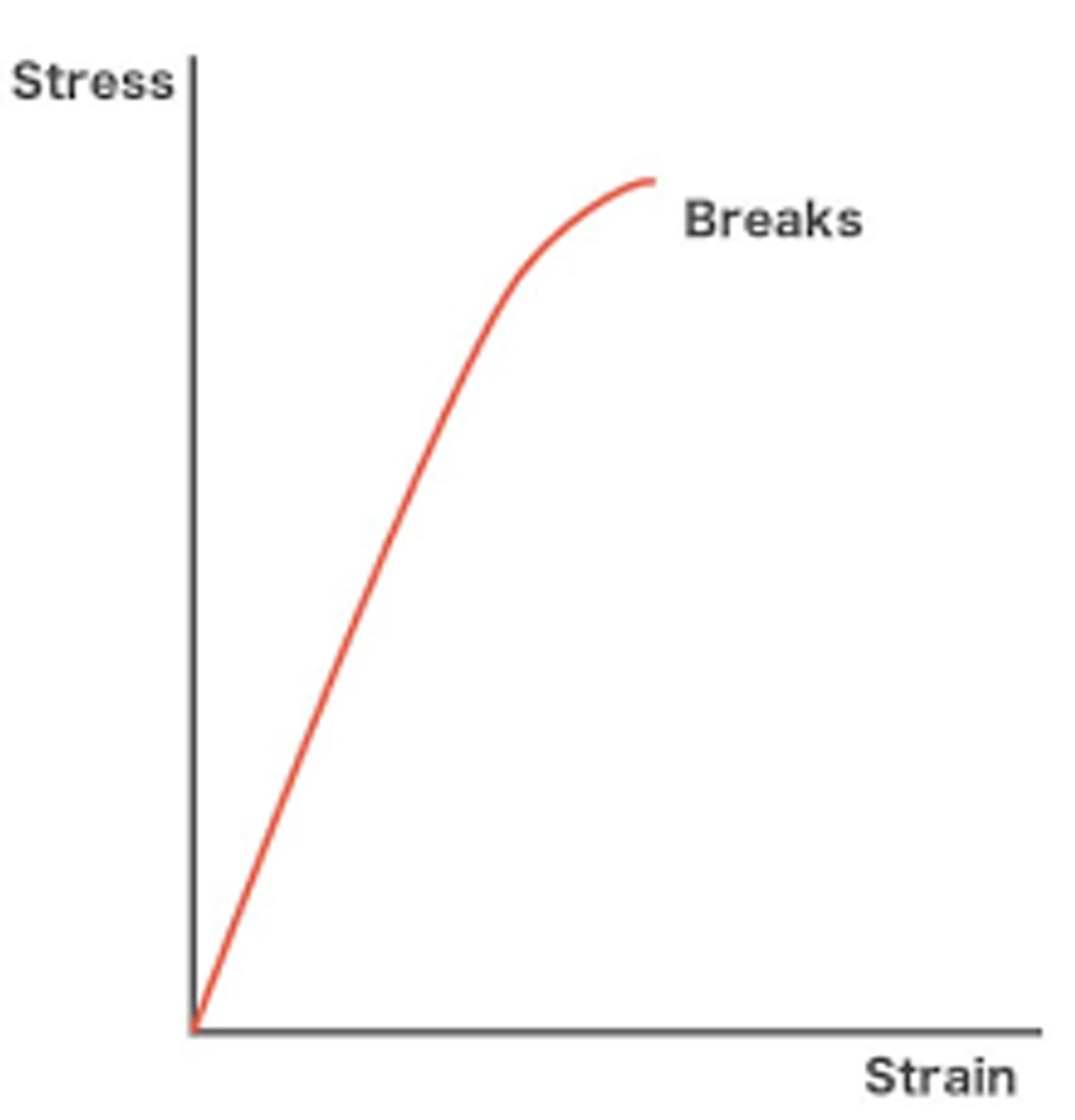
What does a stress-strain graph for a brittle material show us? (2)
- There is a linear relationship throughout.
- There is no plastic deformation and the material breaks very quickly with little stress applied.
What does a stress-strain look like for a ductile material? (1)
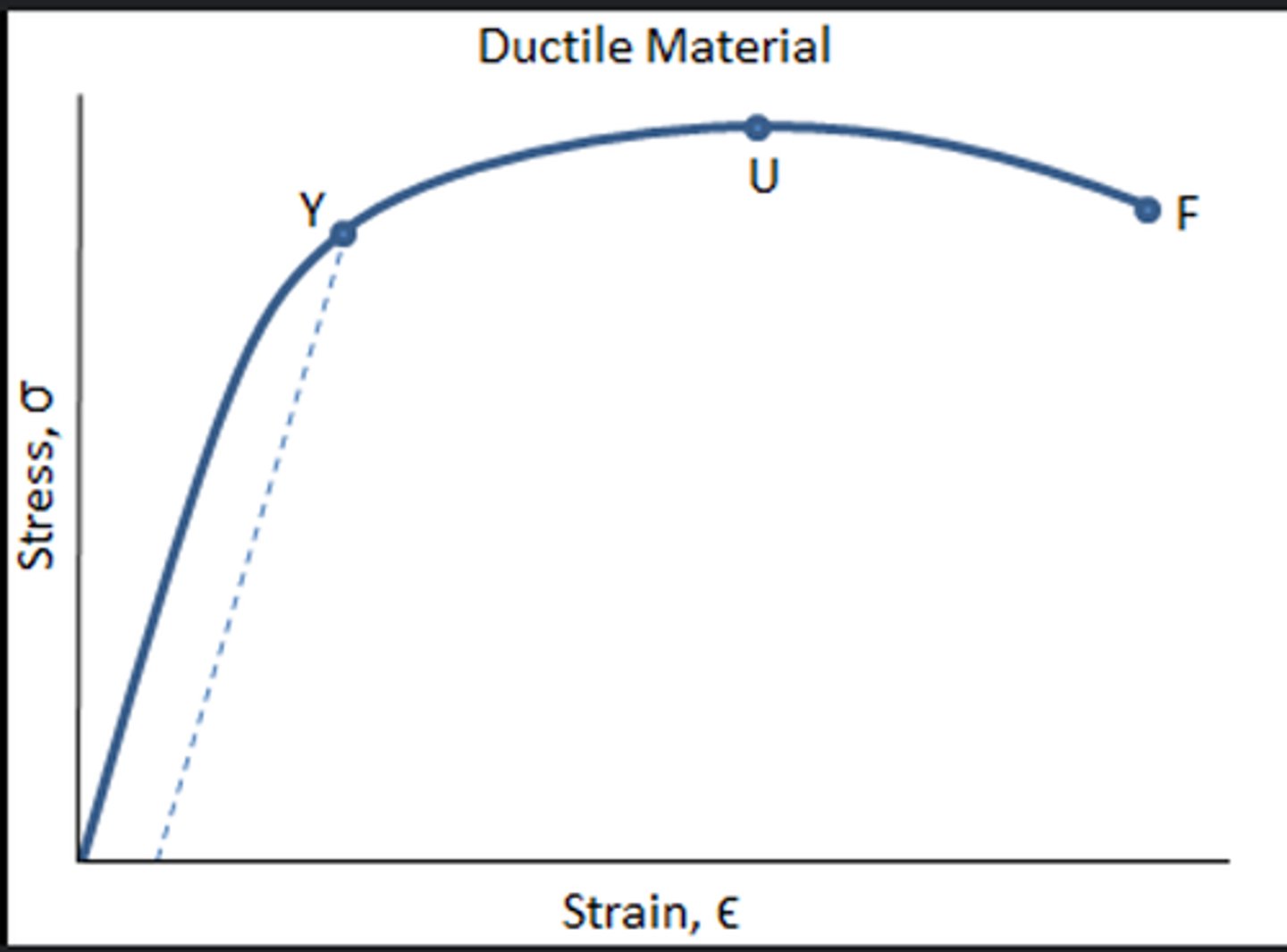
What does a stress-strain graph for a ductile material show us? (2)
- The material can endure a high amount of stress before breaking.
- The material can deform plastically.
What does a stress-strain look like for a polymeric material? (1)
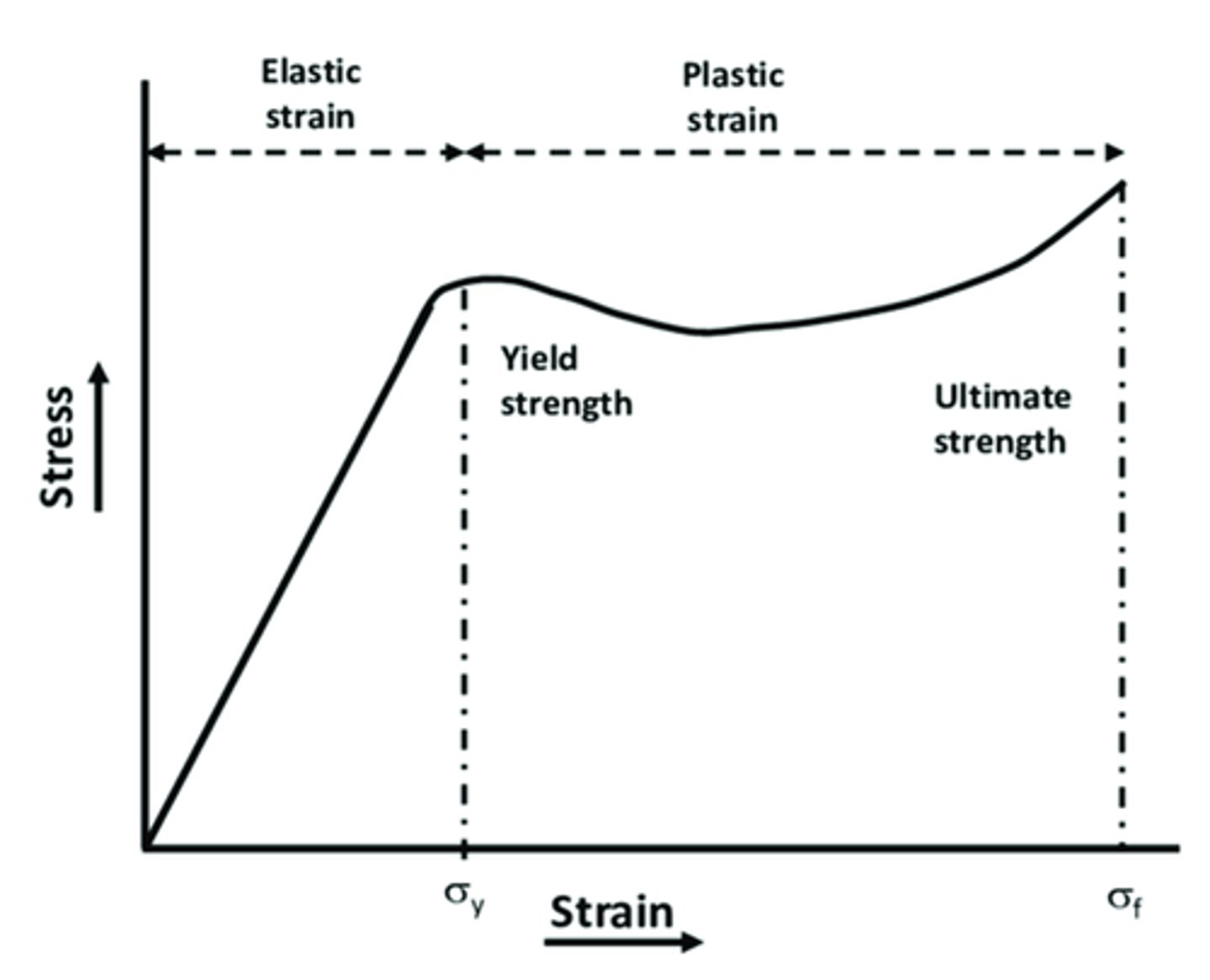
What does a stress-strain graph for a polymeric material show us? (2)
- The polymeric material has a high yield strength and starts to weaken after reaching the yield point.
- It can endure a lot of stress and a has a high UTS.